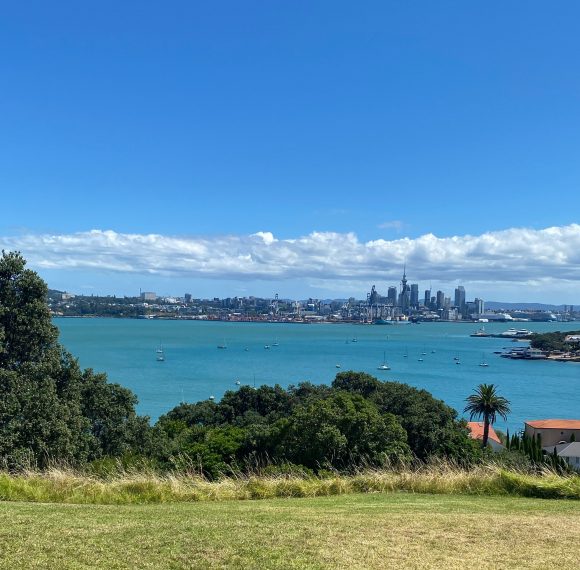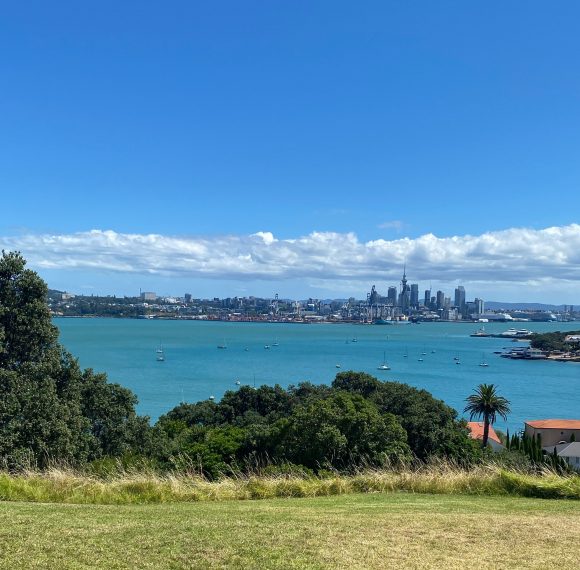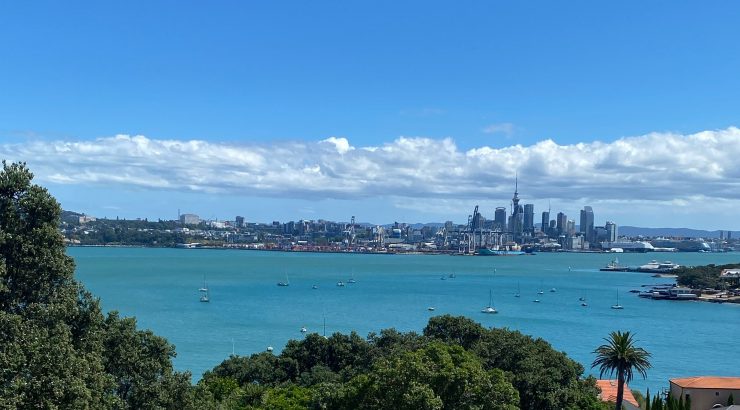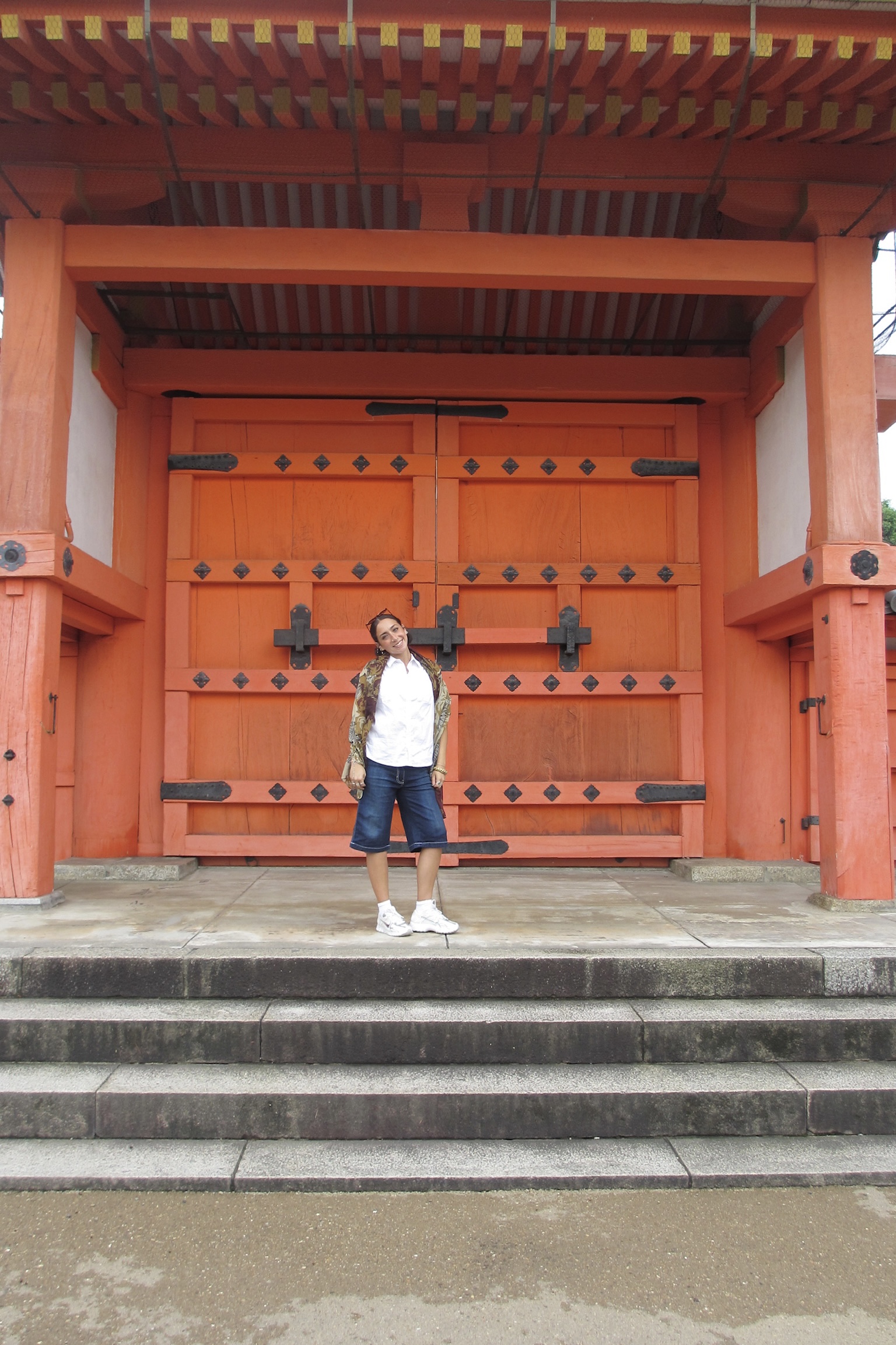Ins and Outs of Being Down Under in New Zealand
October 25, 2024
Kia ora koutou! Welcome to my blog post. I’m excited to tell you a bit about my experience abroad and give a few tips when considering traveling to Aotearoa, NZ. My semester abroad began with a family vacation, a day in Auckland, and then a road trip south to Rotorua for a few days until orientation. For anyone worried about traveling abroad alone, I think there are benefits to having your family travel with you at the start or having them visit later. On the plus side, if you travel earlier, you will be able to get over the jetlag before orientation and potentially get to visit areas that you wouldn’t get to by yourself. On the other hand, the ones who flew in to arrive on the first day of orientation got to meet each other at the airport and on the bus ride over, whereas I met everyone at the hotel. 
It was quite nerve-wracking meeting everyone as I didn’t know anyone, even the ones I briefly met during the pre-departure orientation at Chapman. Looking back now, I would say that it is completely normal to feel that way, but everyone feels it at one point or another. Everyone is still figuring things out, and you’ll get the hang of it and bond with others through shared experiences. To that end, from my experiences I have a few tips and tricks for all of you who are interested in studying abroad, especially in Auckland.
First and foremost, I would recommend getting the most out of orientation as students in Auckland and Wellington were together. Not only did orientation help settle in by showing where and how to do certain things, it also provided opportunities to get to know other students and build bonds. I found that meals and bus rides were the best way to get to know people and find your people. By the end, I knew all of my group’s names and was comfortable enough with all of them to start up a conversation if I saw them. To this day, I’m still in contact with quite a few of the students from my time abroad who aren’t Chapman students.
Additionally, I thought it might be helpful to delve a bit deeper into some cultural shocks that you might experience while in Aotearoa, NZ. Two slightly smaller differences were that people don’t always wear shoes even when walking in public spaces, and they drive on the opposite side of the road. If you cross a street, please look right left right instead of left right left. Also, unlike the U.S., there is no tipping culture for restaurants, etc. Consequently, paying at restaurants is far easier and more efficient, as you often pay at the register and can split the bill easily. The prices of everything include the tax, so what you see is what you get.
 Some commonly used slang/words that have a slightly different connotation are: pies (refers to meat pies, not fruit), togs (swimsuit), paper = course, heaps (a lot), feijoa (sour fruit), kia ora (hello, hi), haere mai (welcome), jandals (flip flops), cuppa (coffee), kiwi (native New Zealander), sweet as (cool, no problem, awesome), and tramping (hiking in the bush).
Some commonly used slang/words that have a slightly different connotation are: pies (refers to meat pies, not fruit), togs (swimsuit), paper = course, heaps (a lot), feijoa (sour fruit), kia ora (hello, hi), haere mai (welcome), jandals (flip flops), cuppa (coffee), kiwi (native New Zealander), sweet as (cool, no problem, awesome), and tramping (hiking in the bush).
Before arrival, having multiple of the correct I adapters/converters is handy and a rechargeable battery brick, especially when spending a lot of time on campus or around the city. Getting lost in a foreign country is not a fun experience, especially if your phone dies. Mine died when I was at a festival outside city limits and it took a few stressful hours to get back to campus. The wattage in Aotearoa is also significantly higher, so certain items like blow dryers or styling tools will need to stay home.
If you’re wondering how much cash to bring along, I would definitely recommend taking out a hundred dollars in foreign currency. Before exchanging any money, I suggest researching the exchange rate just so you have that ratio in your head when shopping. To take out cash in Aotearoa, there are a few ATMs on campus, and in the city, BNZ or ANZ work with a small withdrawal fee (2-7%). At Auckland University/UoA, the clubs require a membership fee at the beginning of the semester ranging from 5 NZ dollars to 50. Many of the events, especially for the sports clubs, will require a deposit fee in cash. Besides campus clubs, shops and restaurants take credit cards.
In terms of shopping, Target doesn’t exist. I needed to go to multiple different stores to get the same things I could obtain from one trip to Target. A useful spot is a train ride away to Westfield Newmarket Shopping Mall, which has both a Countdown and an Asian market if you prefer to get both kinds of groceries. St. Luke Shopping Mall has a Kmart. There is a Countdown/Woolworths about a 20-minute walk from accommodations/Carlaw Park Student Village. In the city, there is a smaller Countdown, Chemist Warehouse, and PB Tech store. I suggest bringing your own reusable bags. 
Overall in hindsight, I would have spent a lot more time researching before arrival. I didn’t know what to research then, but now I do, such as following blogs, YouTube channels, and IG accounts on the student experience and events and places to visit. Familiarizing yourself with how far things are away from accommodations, types of transportation possible, overall costs, and how long it takes is also helpful. The nearest train station is Parnell, a short walk from accommodation and there are bus stops near Countdown.
Signing up for a tertiary student discount for the AT HOP bus/train card will save you a bit, as it can get quite pricey to go round trip.
Hope these tips were somewhat helpful! I do hope some of you do decide to study in Aotearoa. It’s a fantastic place to visit with a wonderful landscape and history.
Calissa McNutt
Creative Writing and French
Spring 24,
Auckland, Arcadia Abroad


